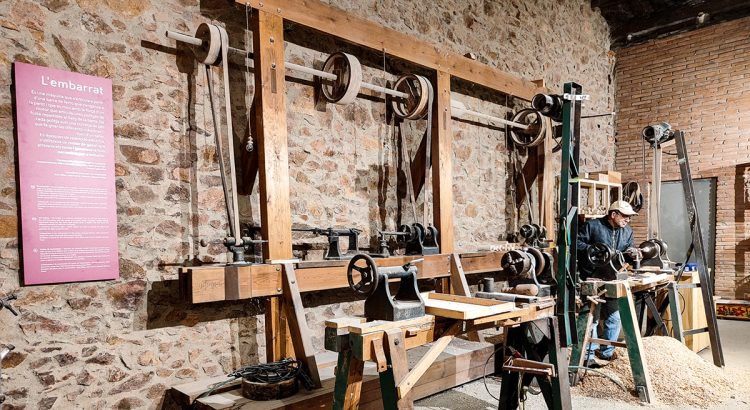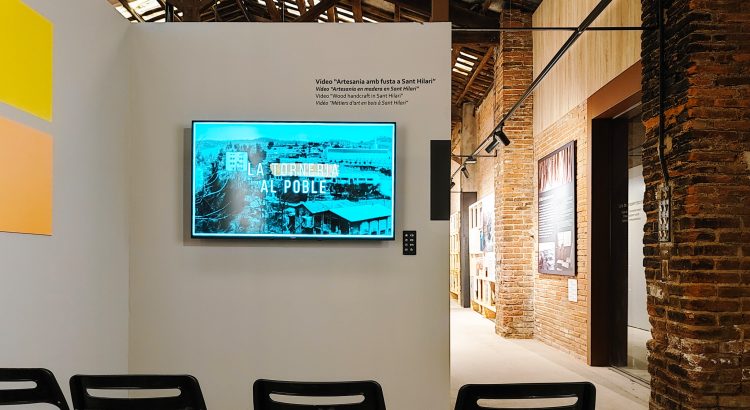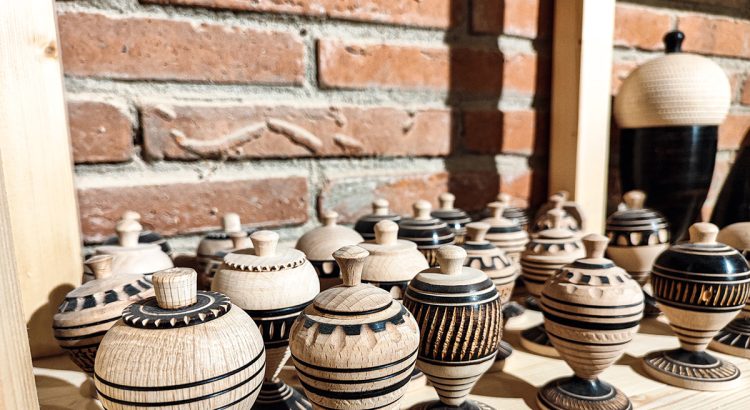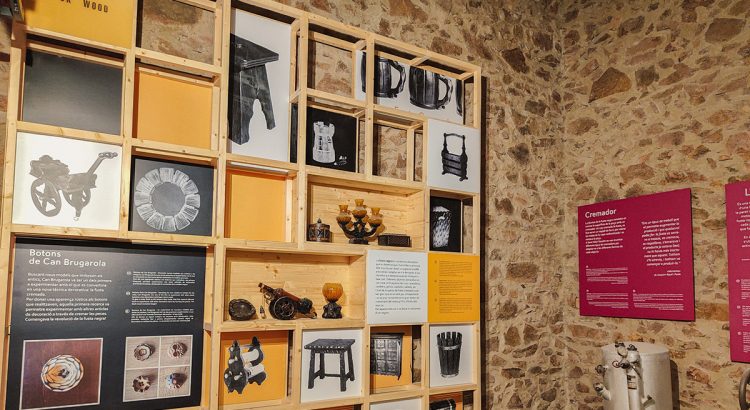Centre Artesà de la Torneria (Turnery artisan centre)
Go back in the past and travel to the 15th century through an exhibition which helps you understand the evolution of this craft trade throughout history. Through demonstrations, you can witness that, with constancy, dedication and the work of artisan masters, a tree trunk can be turned into a gift piece.
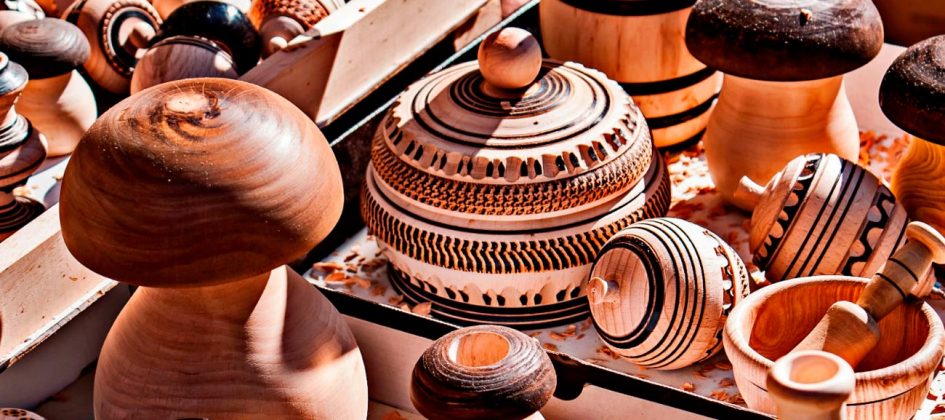
THE TURNERY
It is normal that in Les Guilleries, with such natural environment, where the forest is the main element, people had the inventiveness and the ability of working with wood. Woodturning has been documented as a profession of this town since the 14th century and has survived to the present day even when the artist’s work is not essential any more.
Lathe and gouge, wood and metal, man and tool in full symbiosis transform raw material, wood, into a master piece. Artisans worked with wood from boxwoods, cherry trees, hawthorns, beeches, alders and other types of trees and, depending on their purpose, turned it into a beautiful decorative piece.
Some families, such as Ridau (Pau Torner), Clos (Quico Vigatà), Brugarola, Ripoll, Fauria, Serrano and others, are linked to this trade and have done so until recently. That’s why, with their companies, Sant Hilari has been kept at a high industrial level. By putting the creative spirit and businesses together, the town has been economically important for a long time.
BLACK GOLD
In Sant Hilari, our “black gold” is not oil, but the production of the decorative wood which was made in the town between 1965 and 1990, approximately. It was about working the alder or the Galician pine in lathes, burning, polishing and shining it, and then selling it. Hence the name “black gold”. It was something spectacular from an economic and social point of view, since it generated, with several public limited companies, an important industrial capital which employed many farmers and people from Andalusia. For the townspeople, it was like an industrial revolution, and the burned wood was introduced to the market through international fairs attended by our local industrialists. Brugarola brothers may have been the first ones, but Ripoll and other companies jumped on the bandwagon of the new production too.
Basically, they produced decorative objects and complementary furniture, such as tables and chairs. This industrial activity ended because of the international competition and because the demand changed.
With relatively little time, all it went from having it all to having nothing. Today, burned wood is very rare to found. The industry had to make major reconversions to adapt to the demands of a market dominated by imports, against which it is complicated to struggle.
THE PRESENT
Nowadays, the artisanal activity continues, and the production of the wood is focused on the manufacture of lamps, complementary furniture, decoration and carving. Nevertheless, perspectives have been open in new working areas, which means the involvement of other productive sectors. The number of companies engaged to the direct production has been decreased, but the sector is trying to recover the market through new contributions about items which have more domestic demand.
There was a necessary reconversion of the sector and, at present, we are working hard for a better future, which depends on our go-ahead people’s creativity, effort and good job. The future is yet to come and we want to focus on current realities. Once again, it is believed that the merge with the different inhabitant’s efforts, the administration and the quality of the products must relaunch a sector of local industry which wants to be leader again.

